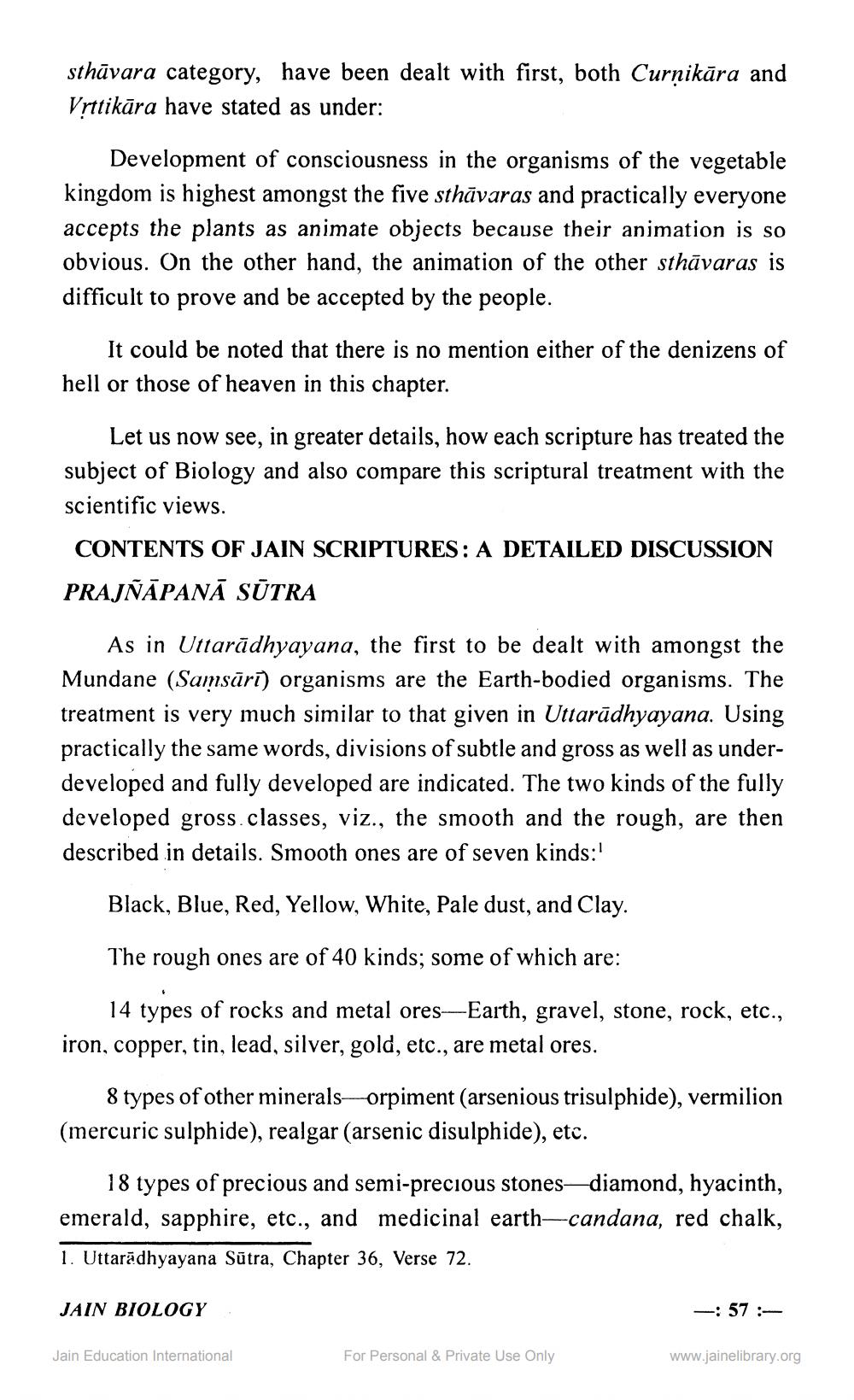________________
sthāvara category, have been dealt with first, both Curņikāra and Vrttikāra have stated as under:
Development of consciousness in the organisms of the vegetable kingdom is highest amongst the five sthāvaras and practically everyone accepts the plants as animate objects because their animation is so obvious. On the other hand, the animation of the other sthāvaras is difficult to prove and be accepted by the people.
It could be noted that there is no mention either of the denizens of hell or those of heaven in this chapter.
Let us now see, in greater details, how each scripture has treated the subject of Biology and also compare this scriptural treatment with the scientific views.
CONTENTS OF JAIN SCRIPTURES: A DETAILED DISCUSSION PRAJỹẶPANA SUTRA
As in Uttarādhyayana, the first to be dealt with amongst the Mundane (Samsārī) organisms are the Earth-bodied organisms. The treatment is very much similar to that given in Uttarādhyayana. Using practically the same words, divisions of subtle and gross as well as underdeveloped and fully developed are indicated. The two kinds of the fully developed gross. classes, viz., the smooth and the rough, are then described in details. Smooth ones are of seven kinds:!
Black, Blue, Red, Yellow, White, Pale dust, and Clay.
The rough ones are of 40 kinds; some of which are:
14 types of rocks and metal ores-Earth, gravel, stone, rock, etc., iron, copper, tin, lead, silver, gold, etc., are metal ores.
8 types of other minerals—orpiment (arsenious trisulphide), vermilion (mercuric sulphide), realgar (arsenic disulphide), etc.
18 types of precious and semi-precious stones—diamond, hyacinth, emerald, sapphire, etc., and medicinal earth-candana, red chalk, 1. Uttarādhyayana Sūtra, Chapter 36, Verse 72.
JAIN BIOLOGY
-
57 :
Jain Education International
For Personal & Private Use Only
www.jainelibrary.org




